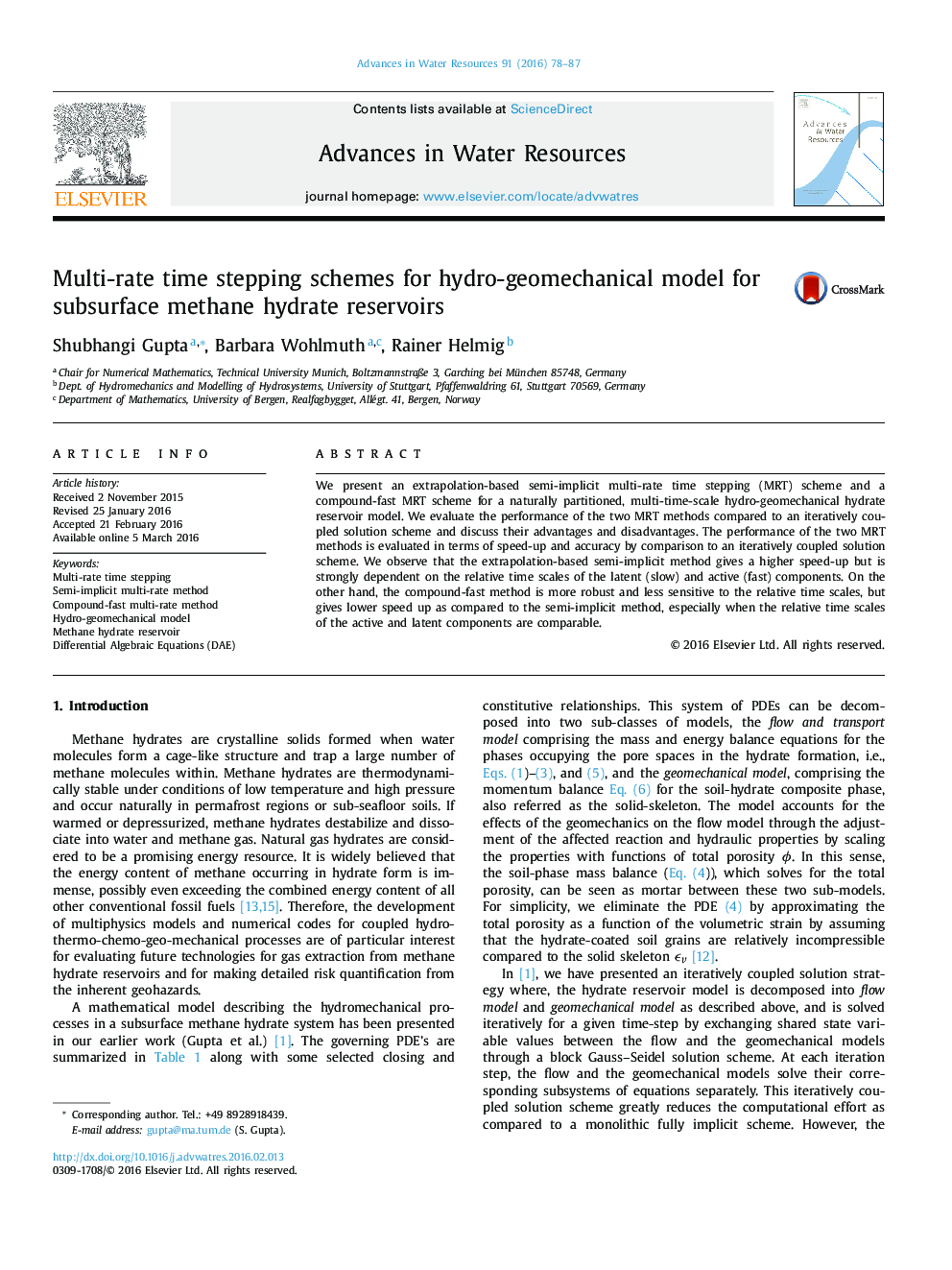| Article ID | Journal | Published Year | Pages | File Type |
|---|---|---|---|---|
| 4525264 | Advances in Water Resources | 2016 | 10 Pages |
•Semi-Implicit and Compound-fast MRT methods are proposed based on Implicit–Explicit approach.•Semi-Implicit MRT gives higher speed-up but lower accuracy compared to Compound-fast MRT.•Stability of Semi-Implicit MRT depends on the relative activity of the system-components.•Stability of Compound-fast MRT is relatively independent of the activity of the system-components.•Significant speed-up can be expected for complex 3D settings.
We present an extrapolation-based semi-implicit multi-rate time stepping (MRT) scheme and a compound-fast MRT scheme for a naturally partitioned, multi-time-scale hydro-geomechanical hydrate reservoir model. We evaluate the performance of the two MRT methods compared to an iteratively coupled solution scheme and discuss their advantages and disadvantages. The performance of the two MRT methods is evaluated in terms of speed-up and accuracy by comparison to an iteratively coupled solution scheme. We observe that the extrapolation-based semi-implicit method gives a higher speed-up but is strongly dependent on the relative time scales of the latent (slow) and active (fast) components. On the other hand, the compound-fast method is more robust and less sensitive to the relative time scales, but gives lower speed up as compared to the semi-implicit method, especially when the relative time scales of the active and latent components are comparable.
